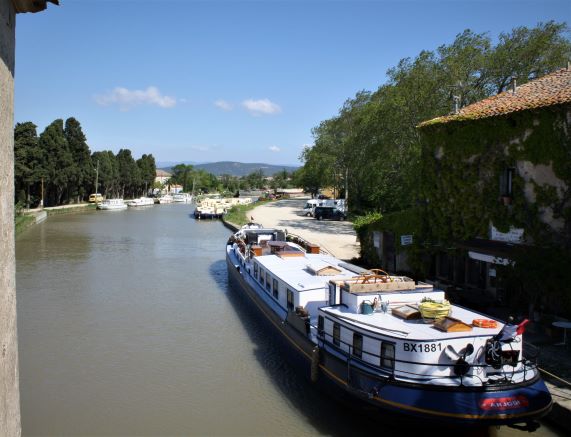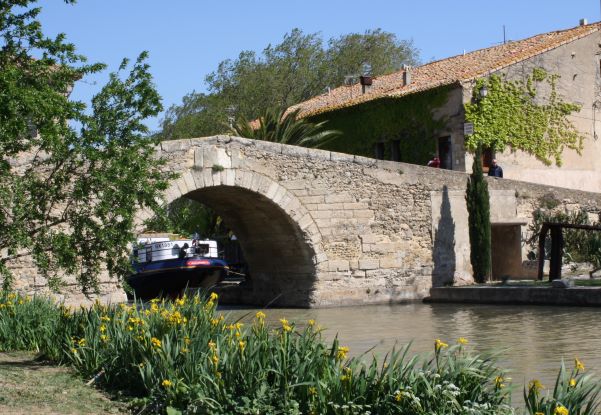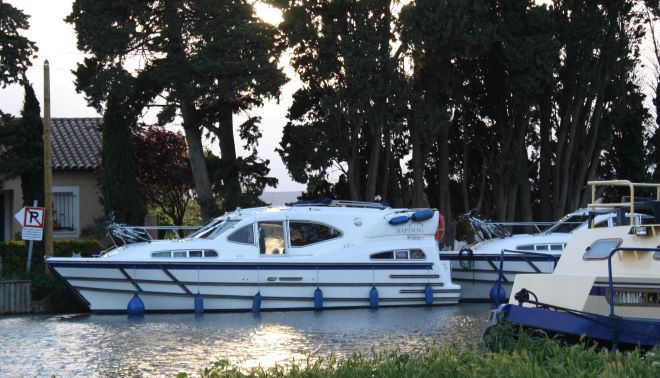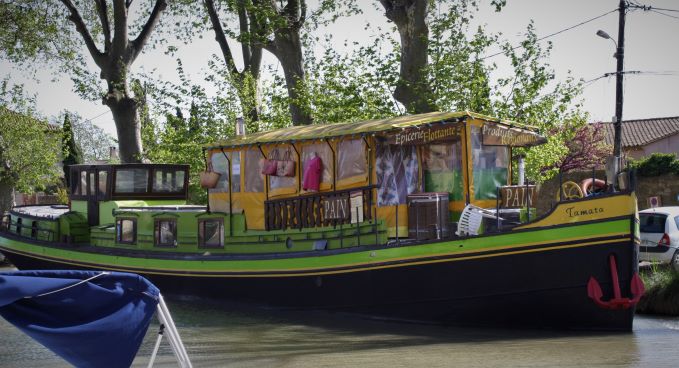Minerve sits on a rocky outcrop, perched over a couple of rivers in the Hérault department in the Occitanie region in southern France. It is the namesake of the Minervois wine region. It is bordered to the south by the Canal du Midi and to the north by the Montagne Noire mountain range.
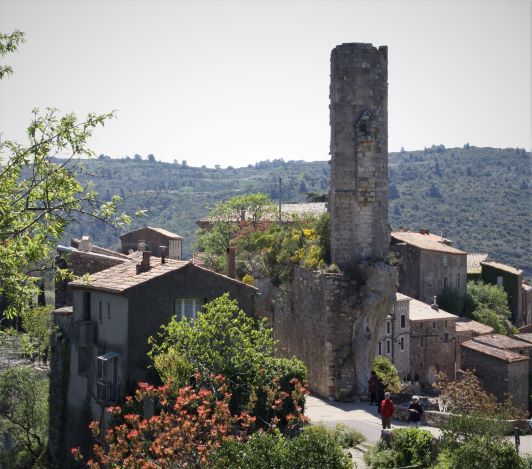
The scenery is breathtaking with gorges and canyons carved in the limestone walls over eons, bridges built where they appear out of those walls, tunnels carved into rock, and houses perched in and atop the limestone. Some look suspended, as if a mild breeze would topple them into the caverns below.
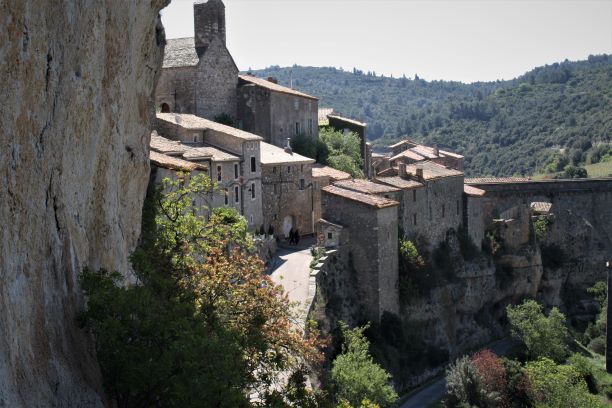
We wandered the streets and alleys, climbing up and over walkways and gardens, taking in the views, and thinking of the history here. This was a medieval village and all that went with it.
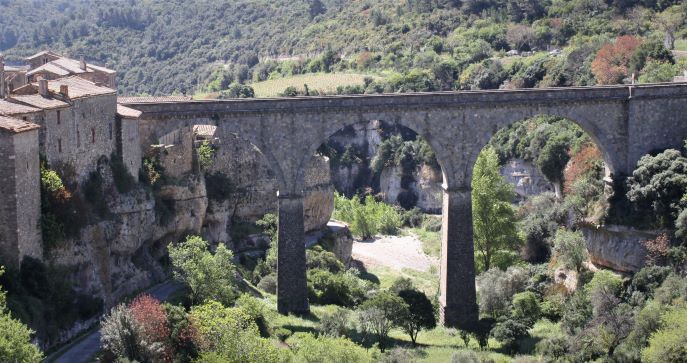
Some history…
With the backing of God and the Pope, with men hungry for loot and blood, Simon de Montfort laid seige, to the impregnable fortress village. And to speed things along he attacked St Rustique’s well, the principal waters source for the village, found at the base of the village. Four catapults were set up around the village, -three towards the city gates and the fourth – the largest named “Malevoisine” to destroy the well.
The village was well protected with double surrounding walls, and overhanging ledges. But, they could not withstand the attacks and eventually several villagers were burned at the stake.
Now, little is left of the fortress. The village is a hodge-podge of narrow alleys, topped by a simple 12th century church.
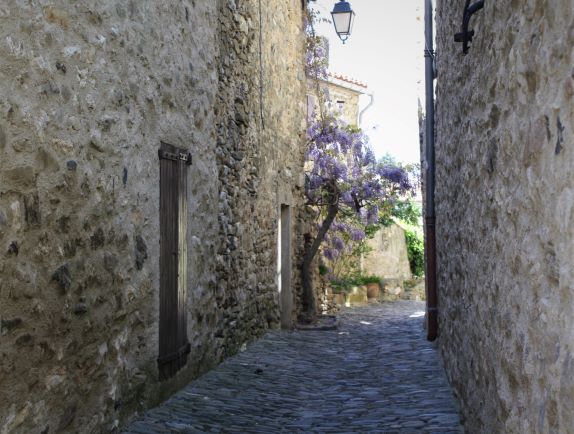
Definitely worth a side trip if you are staying in the area.
If You Go: Minerve is 25 kilometers north-west of Narbonne in Languedoc-Roussillon. It is classified as one of the most beautiful villages of France.
